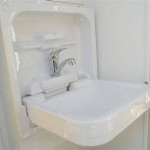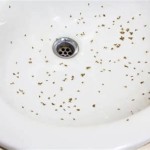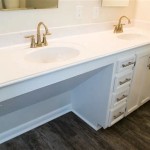How Do I Get Rid of Tiny Flies in My Bathroom?
The persistent presence of tiny flies in a bathroom is a common household nuisance. These minuscule pests, often referred to as drain flies, fruit flies, or phorid flies, thrive in damp, organic-rich environments. Their rapid breeding cycle and attraction to standing water and decaying matter make them a persistent problem that requires a multi-faceted approach for effective eradication. Identifying the specific type of fly is crucial for implementing the most appropriate control measures.
Understanding the biology and behavior of these flies is essential for successful elimination. Drain flies, for example, are attracted to the stagnant water and organic buildup found in drains, pipes, and sewers. Fruit flies, on the other hand, are drawn to fermenting sugars and are often found near overripe fruit, spilled drinks, or improperly cleaned garbage disposals. Phorid flies, sometimes called humpbacked flies due to their characteristic arched thorax, are attracted to decaying organic matter, including sewage, moist soil, and even damp cardboard. Determining the fly species will directly influence the location and type of treatment implemented.
The following sections detail comprehensive strategies for identifying, eliminating, and preventing the recurrence of these unwanted bathroom inhabitants. These methods encompass sanitation practices, trapping techniques, and, when necessary, the application of targeted insecticide treatments. The goal is to permanently resolve the infestation by addressing the root causes and creating an inhospitable environment for the flies.
Identifying Common Bathroom Fly Species
Accurate identification is a prerequisite for effective pest control. Distinguishing between drain flies, fruit flies, and phorid flies allows for the implementation of specific and targeted measures. Each type of fly exhibits unique characteristics in terms of appearance, behavior, and preferred breeding grounds.
Drain Flies (Psychodidae): These flies, also known as moth flies or sewer gnats, are small, fuzzy insects, typically measuring about 1/8 inch in length. Their wings are broad and covered in fine hairs, giving them a moth-like appearance. They are typically gray or brown in color. Drain flies are weak fliers and are often seen resting on walls or ceilings near drains. They lay their eggs in the gelatinous film that lines drains and pipes, feeding on the decaying organic matter present. This film offers them a protected breeding environment and a readily available food source. The larval stage of drain flies is characterized by their preference for this decaying organic matter, which is crucial to the fly's life cycle.
Fruit Flies (Drosophilidae): Fruit flies are smaller than drain flies, usually around 1/10 inch long. They are typically tan or brown in color with bright red eyes. Fruit flies are attracted to ripe, rotting, or fermenting fruits and vegetables, as well as other sugary substances. In the bathroom, they might be attracted to spilled drinks, fermenting residues in the trash can, or even moisture accumulating around toiletries containing sugars or fruit extracts. Their breeding cycle is extremely rapid, with eggs hatching in as little as 24 hours, leading to a quick population explosion if the food source is not eliminated. Female fruit flies can lay hundreds of eggs in their short lifespan, making them one of the fastest-reproducing nuisance insects.
Phorid Flies (Phoridae): Phorid flies are also small, typically about 1/8 inch long. They are distinguished by their characteristic humped back and jerky, erratic flight pattern. Phorid flies are attracted to decaying organic matter, including sewage, damp soil, and even decaying cardboard. In the bathroom, they may be attracted to leaks under sinks, overflowing toilets, or damp areas around the shower or tub. They are also capable of breeding in very small amounts of organic waste. Unlike drain flies and fruit flies, phorid flies are capable of migrating long distances to reach a suitable breeding site. They are also attracted to light sources.
Careful observation of the flies' appearance, behavior, and location will aid in accurate identification and guide the selection of appropriate control methods. Noticing the fly’s physical characteristics and typical flight pattern will greatly assist in this phase. If identification is uncertain, consulting with a pest control professional is advisable.
Eliminating the Source of the Infestation
Addressing the breeding source is paramount for eliminating tiny flies in the bathroom. Without removing the food source and breeding grounds, any control measures will only provide temporary relief. The primary focus should be on sanitation and eliminating any areas where the flies can breed and thrive. Thorough cleaning and targeted treatment are necessary to effectively eradicate the infestation.
Cleaning Drains and Pipes: Drains are a common breeding ground for drain flies and phorid flies. Regularly cleaning drains with a stiff brush and a drain cleaner designed to remove organic buildup is essential. Avoid using harsh chemical drain cleaners, as they can damage pipes and are not always effective at removing the organic material that flies feed on. Instead, opt for enzymatic drain cleaners that break down organic matter without harming the plumbing. Pour the enzymatic cleaner into the drain according to the manufacturer's instructions and allow it to sit overnight for optimal effectiveness. Flushing the drain with hot water after the treatment is also recommended. Repeating this process weekly can prevent future buildup and discourage fly breeding.
Eliminating Standing Water: Standing water provides a breeding ground for various types of flies. Regularly check for and eliminate any standing water in the bathroom, including in sinks, tubs, showers, and toilet bowls. Repair any leaks under sinks or around toilets to prevent water from accumulating. Ensure proper ventilation in the bathroom to reduce humidity and discourage the growth of mold and mildew, which can also attract flies. Pay close attention to areas where water can pool, such as around the base of the toilet, under the sink, and within shower enclosures. Drying these areas regularly can significantly reduce the attractiveness of the bathroom to flies.
Cleaning and Sanitizing: Regularly clean and sanitize the bathroom to remove any food sources for flies. This includes cleaning up spills, wiping down surfaces, emptying trash cans, and keeping toiletries clean. Pay particular attention to areas where sugary substances may accumulate, such as around soap dispensers, shampoo bottles, and toothpaste tubes. Use a disinfectant cleaner to kill any bacteria or fungi that may be attracting flies. Remove any decaying organic matter, such as dead plants or stagnant water in flower vases. Maintaining a high level of cleanliness will make the bathroom less attractive to flies and reduce their ability to breed and thrive.
Inspecting and Repairing: Conducting a thorough inspection of the bathroom for potential breeding sites is crucial. Check for leaks under sinks, around toilets, and along pipes. Repair any damaged plumbing promptly to prevent water from accumulating. Inspect grout and sealant around showers and tubs for cracks or gaps, which can provide a breeding ground for flies. Seal any cracks or gaps with waterproof sealant to prevent moisture from accumulating and creating a favorable environment for flies. Also, inspect any areas where moisture might accumulate, such as damp towels or shower curtains, and ensure they are properly dried or laundered regularly.
By systematically eliminating potential breeding sources and maintaining a clean and dry environment, it is possible to significantly reduce the fly population in the bathroom.
Implementing Fly Trapping and Control Measures
In addition to eliminating the breeding source, implementing fly trapping and control measures can help to reduce the existing fly population and prevent future infestations. Various trapping methods and insecticide treatments are available, each with its own advantages and disadvantages. Choosing the appropriate method depends on the type of fly, the severity of the infestation, and personal preferences.
Vinegar Traps: Vinegar traps are an effective and non-toxic way to attract and capture fruit flies. Fill a small bowl or jar with apple cider vinegar or balsamic vinegar. Add a few drops of dish soap to break the surface tension of the vinegar. Cover the top of the bowl or jar with plastic wrap and poke small holes in the plastic wrap. The flies will be attracted to the vinegar, enter the trap through the holes, and become trapped in the liquid. Replace the vinegar solution every few days or as needed. This method is most effective for targeting fruit flies, as they are strongly attracted to the fermenting sugars in vinegar.
Sticky Traps: Sticky traps are another effective way to capture flies. These traps consist of sticky paper or cards that are coated with an adhesive. Place the sticky traps near areas where flies are commonly seen, such as near drains, sinks, or windows. The flies will be attracted to the trap and become stuck to the adhesive surface. Replace the traps when they are full of flies. Sticky traps are effective for capturing drain flies, fruit flies, and phorid flies. However, they should be placed out of reach of children and pets to prevent accidental contact.
Bug Zappers: Bug zappers use ultraviolet light to attract insects, which are then electrocuted when they come into contact with the electrified grid. While bug zappers can kill a large number of insects, they are not always effective at targeting specific types of flies. Also, bug zappers can be noisy and may attract other unwanted insects to the area. For an indoor bathroom setting, bug zappers may not be the most suitable option due to their size and potential for noise.
Insecticide Sprays: Insecticide sprays can be used to kill flies on contact. However, they should be used with caution, as they can be harmful to humans and pets. Choose an insecticide that is specifically labeled for use against flies and follow the manufacturer's instructions carefully. Apply the insecticide to areas where flies are commonly seen, such as around drains, sinks, and windows. Ventilate the area thoroughly after applying the insecticide. Avoid spraying insecticide directly onto food preparation surfaces or areas where children or pets may come into contact. Consider using natural insecticide options made from pyrethrins, neem oil, or other plant-based ingredients.
Professional Pest Control: In cases of severe infestations, it may be necessary to contact a professional pest control service. Pest control professionals have the knowledge, experience, and equipment to effectively eliminate fly infestations. They can identify the source of the infestation, recommend appropriate treatment options, and provide long-term prevention strategies. Pest control professionals can also use specialized equipment and insecticides that are not available to the general public.
Combining trapping methods with targeted insecticide treatments, when necessary, provides a comprehensive approach to controlling tiny flies in the bathroom. Regular monitoring and maintenance are essential to prevent future infestations.

5 Easy Ways To Get Rid Of Drain Flies Fast

How To Get Rid Of Drain Flies Moth And Prevent An Infestation Pest Defence
Jab Plumbing Solutions Blog Blocked Drain Plumbers

Are These Drain Flies Coming Out Of My Bathroom Drains

How To Rid Of Drain Flies Forbes Home

How To Get Rid Of Drain Flies
How To Get Rid Of Gnats Drain Flies Fruit And Fungus

Fruit Flies In The Bathroom Get Rid Of Them Michael S Plumbing Orlando
We Are Seeing Small Flies In Our Bathroom Any Idea What Could Be Causing Them To Show Up Quora

How To Get Rid Of Drain Flies Rt Olson Plumbing







